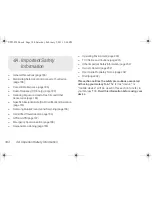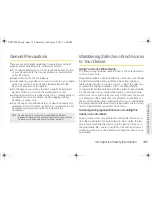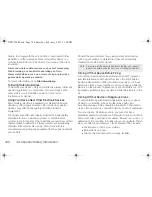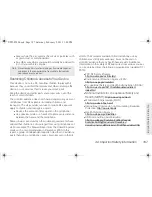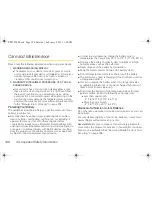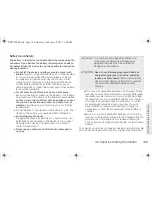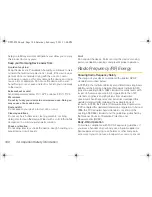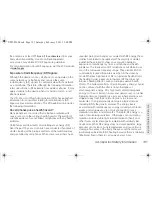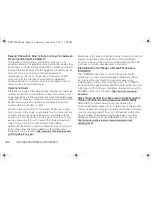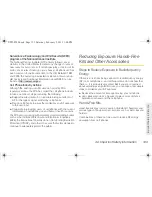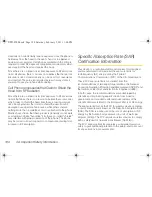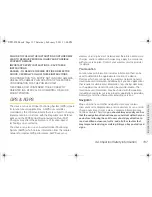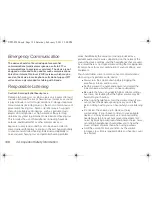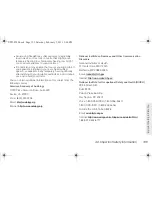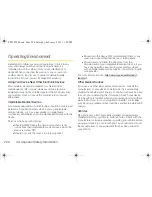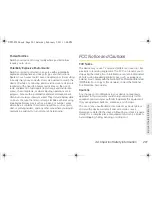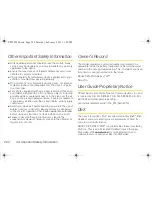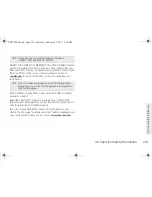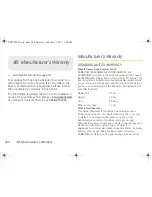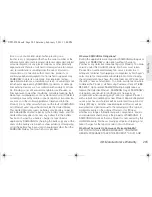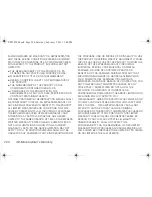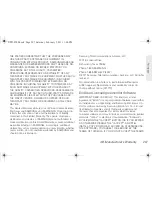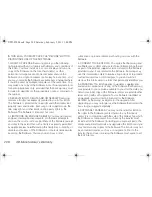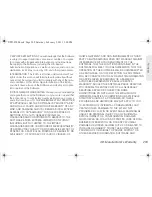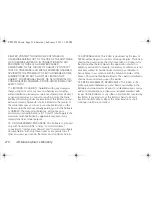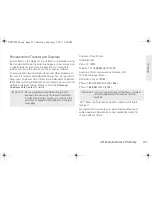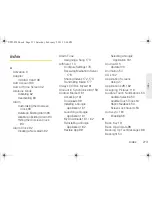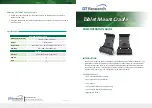
198
4A. Important Safety Information
Emergency Communication
The device should not be relied upon for essential
communications (medical emergencies, calls to 911, or
communications to emergency services). The device is not
designed or intended to be used for such communications.
Voice Over Internet Protocol (VOIP) services which may be
used on the device to make phone calls do not support 911
calls and are only intended for talking with friends.
Responsible Listening
Caution!: Avoid potential hearing loss.
Damage to hearing occurs when a person is exposed to loud
sounds over time. The risk of hearing loss increases as sound
is played louder and for longer durations. Prolonged exposure
to loud sounds (including music) is the most common cause of
preventable hearing loss. Some scientific research suggests
that using portable audio devices, such as portable music
players and cell phones, at high volume settings for long
durations may lead to permanent noise-induced hearing loss.
This includes the use of headphones (including headsets,
earbuds, and Bluetooth® or other wireless devices).
Exposure to very loud sound has also been associated in
some studies with tinnitus (a ringing in the ear), hypersensitivity
to sound, and distorted hearing. Individual susceptibility to
noise-induced hearing loss and potential hearing problem
varies. Additionally, the amount of sound produced by a
portable audio device varies depending on the nature of the
sound, the device settings, and the headphones that are used.
As a result, there is no single volume setting that is appropriate
for everyone or for every combination of sound, settings, and
equipment.
You should follow some common sense recommendations
when using any portable audio device:
䡲
Always turn the volume down before plugging the
earphones into an audio source.
䡲
Set the volume in a quiet environment and select the
lowest volume at which you can hear adequately.
䡲
Be aware that you can adapt to higher volume settings
over time, not realizing that the higher volume may be
harmful to your hearing.
䡲
When using headphones, turn the volume down if you
cannot hear the people speaking near you or if the
person sitting next to you can hear what you are listening
to.
䡲
Do not turn the volume up to block out noisy
surroundings. If you choose to listen to your portable
device in a noisy environment, use noise-cancelling
headphones to block out background environmental
noise. By blocking background environment noise, noise
cancelling headphones should allow you to hear the
music at lower volumes than when using earbuds.
䡲
Limit the amount of time you listen. As the volume
increases, less time is required before you hearing could
be affected.
SPH-P100.book Page 198 Saturday, February 5, 2011 3:00 PM
Summary of Contents for Galaxy Tab SPH-P100
Page 13: ...Section 1 Getting Started SPH P100 book Page 1 Saturday February 5 2011 3 00 PM ...
Page 18: ...SPH P100 book Page 6 Saturday February 5 2011 3 00 PM ...
Page 19: ...Section 2 Your Device SPH P100 book Page 7 Saturday February 5 2011 3 00 PM ...
Page 137: ...Section 3 Sprint Service SPH P100 book Page 125 Saturday February 5 2011 3 00 PM ...
Page 194: ...SPH P100 book Page 182 Saturday February 5 2011 3 00 PM ...
Page 224: ...SPH P100 book Page 212 Saturday February 5 2011 3 00 PM ...
Page 238: ...SPH P100 book Page 226 Saturday February 5 2011 3 00 PM ...

